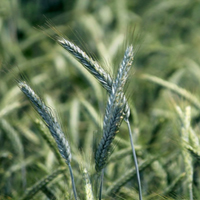Post-harvest residues of narrow-leafed lupin/oat mixtures as a source of biological nitrogen for hybrid winter rye

Accepted: 13 March 2020
HTML: 9
All claims expressed in this article are solely those of the authors and do not necessarily represent those of their affiliated organizations, or those of the publisher, the editors and the reviewers. Any product that may be evaluated in this article or claim that may be made by its manufacturer is not guaranteed or endorsed by the publisher.
Post-harvest residues of narrow-leafed lupin/oat mixtures are a valuable source of biological nitrogen for the following crop plants, including winter cereals. Hybrid winter rye, which is increasingly popular in Germany and Poland, positively responds to cultivation at good sites. The objective of the research was to determine the effect of the biomass of the post-harvest residues of narrow-leafed lupin, oat and their mixtures on yield performance and amount of nitrogen accumulated in hybrid winter rye grain. The following two factors were examined in an experiment: factor I - forecrop mixtures: narrow-leafed lupin - pure stand 100%, oat - pure stand 100%, narrow-leafed lupin 75% + oat 25%, narrowleafed lupin 50% + oat 50%, narrow-leafed lupin 25% + oat 75%; factor II - forecrop harvest date: the stage of narrow-leafed lupin flowering, the stage of narrow-leafed lupin flat green pod. The results demonstrated that oat and narrow-leafed lupin/oat mixtures containing 25 + 75% and 50 + 50% of the respective components and harvested at the stage of narrow-leafed lupin flat green pod supplied the greatest amount of post-harvest residue biomass, and narrow-leafed lupin harvested at the aforementioned stage accumulated the most nitrogen. Hybrid winter rye following the forecrop of narrow-leafed lupin/oat mixture containing 50 + 50% of the respective components and harvested at the stage of narrowleafed lupin flat green pod produced the highest grain yield.
Highlights:
- Narrow-leaf lupine mixtures with spring rye with 25% and 75% and 50% + 50% components collected in the flat green pod stage provide the largest amount of nitrogen-rich post-harvest residues, and are therefore a good forecrop for winter triticale.
- Winter triticale cultivated in such positions yielded high yields.
- The grain was characterized by the largest mass of 1000 grains and accumulated the largest amount of nitrogen.
How to Cite
PAGEPress has chosen to apply the Creative Commons Attribution NonCommercial 4.0 International License (CC BY-NC 4.0) to all manuscripts to be published.

 https://doi.org/10.4081/ija.2020.1503
https://doi.org/10.4081/ija.2020.1503



